This scene is a historical lighthouse near the north tip of Keweenaw Peninsula in the upper peninsula of Michigan. It is more than a mile away from the shooting location. This Copper Harbor Lighthouse has been used in all lens comparison pages at this site.
Shooting parameters are as follows. First, SATURATION, CONTRAST and SHARPNESS were set to LOW in all tests. Second, ISO 80 was used. Third, aperture-priority mode was used with aperture set to f/5.6 and shutter speed was determined by the camera metering system. The multisegment metering mode was used and the selected shutter speed was 1/640 sec. Since it was a little windy, OIS mode 2 was used in case the lens and camera combo may cause slight camera shake. Fourth, for each lens, 3 to 5 shots were taken and the best was selected as the "representative" of the lens being used. Fifth, a number of areas were cropped for center and edge sharpness comparison, and for examining possible chromatic aberration.
The following shows the images taken with the seven teleconverter lenses being compared. They are divided into two groups. The first is the 1.5X group, which has the Olympus A-200 1.5X, Ricoh TC-200M 1.5X, and Nikon TC-E15ED; and the second is the 1.7X group, which includes Olympus lenses: C-180, C-210, B-300 and TCON-17. The Nikon TC-E15ED and Olympus TCON-17 are used as benchmarks as they are well-known lens of excellent image quality.
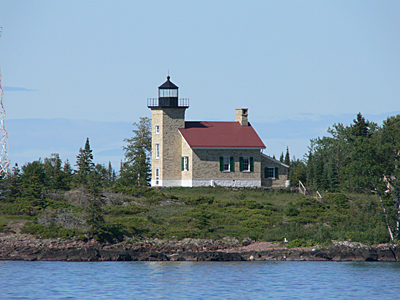
|
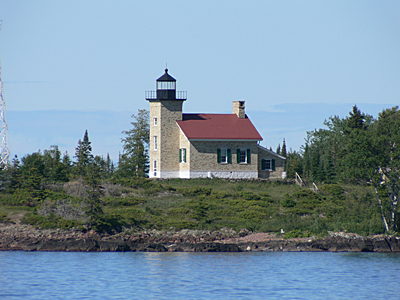
|
| Olympus A-200 1.5X | Ricoh TC-200M 1.5X |
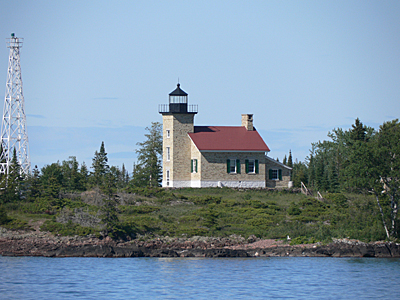
|
|
| Nikon TC-E15ED 1.5X | |
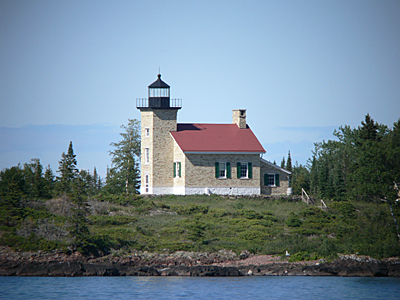
|
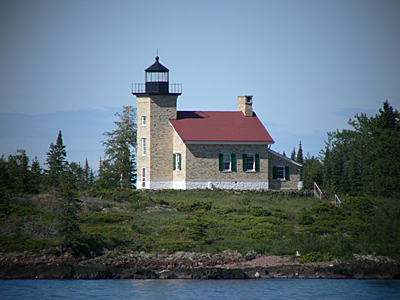
|
| Olympus C-180 1.7X | Olympus C-210 1.9X |
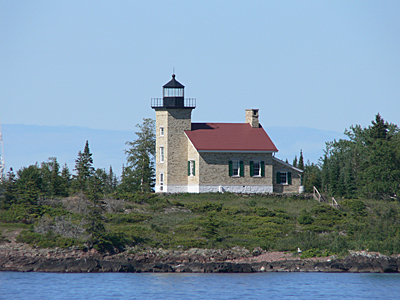
|
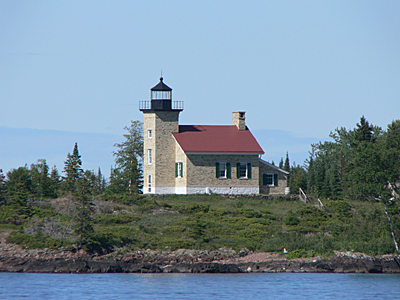
|
| Olympus B-300 1.7X | Olympus TCON-17 1.7X |
The following shows 100% center crops of the original images. Since this portion is very close to the autofocus region, it should be very sharp. Moreover, since lenses are usually sharp in the center, this portion should also be the best in the image of each lens.
In the 1.5X group, it seems the TC-200M is slightly better than the Nikon TC-E15ED because the definitions of the window grid and bricks are slightly clearer in TC-200M's image than that in the Nikon's. However, the TC-200M has a trace of purple fringe between high contrast areas (e.g., white window frames). The Olympus A-200 is a bit soft and still performs well.
In the 1.7X group, the C-210, B-300 and TCON-17 perform similarly, while the C-180 is very slightly behind. The TCON-17 has a very slight trace of purple and green fringes along the right edge of window frames, while the C-210 shows significant fringes. It is interesting to note that the C-180 and B-300 do not show much fringes!
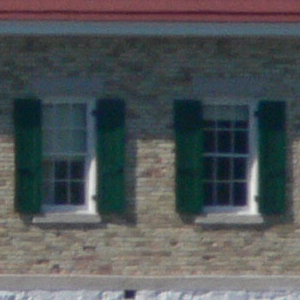
|
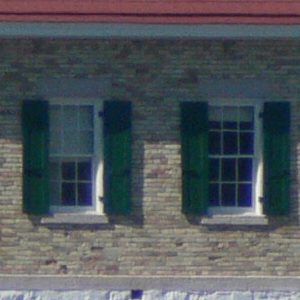
|
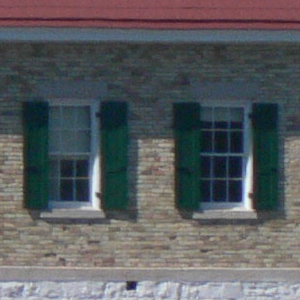
|
| Olympus A-200 1.5X | Ricoh TC-200M 1.5X | Nikon TC-E15ED 1.5X |
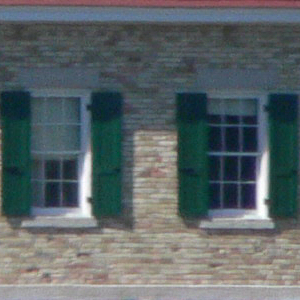
|
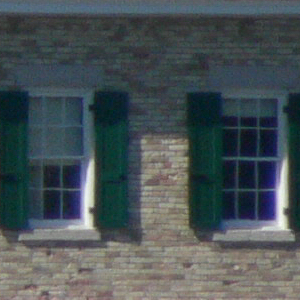
|

|
| Olympus C-180 1.7X | Olympus C-210 1.9X | Olympus B-300 1.7X |
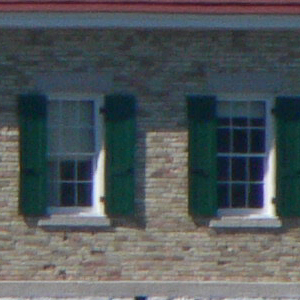
|
||
| Olympus TCON-17 1.7X | ||
The tower of the lighthouse is opposite to the windows with respect to the focus region, and is in a high contrast area. The following shows the crops of the tower portion of each image. It is clear that the Nikon TC-E15ED produces a very sharp image with a very slight trace of purple fringe along the edges of the roof. The TC-200M preserves a bit more details of the brick wall than the Olympus A-200 does; however, the TC-200M produces a higher level of purple fringing. In the 1.7X group, the B-300 and TCON-17 perform similarly with the TCON-17 showing a bit more purple fringing. The contrast of the C-210 seems a little higher than that of the C-180; but, at the same time, the C-210 has more purple fringing.
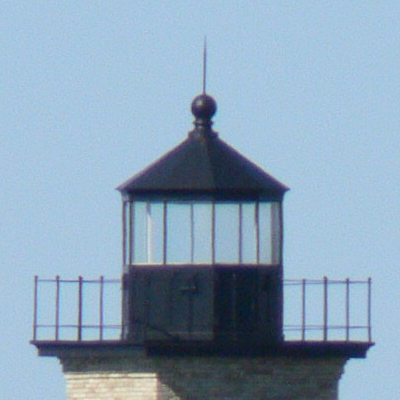
|
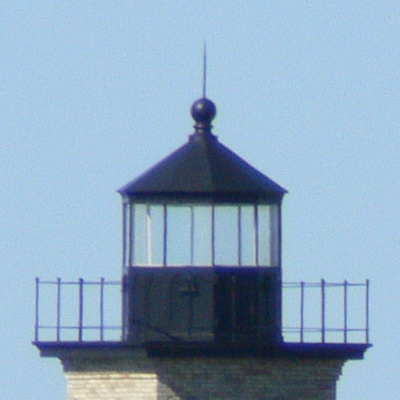
|
| Olympus A-200 1.5X | Ricoh TC-200M 1.5X |
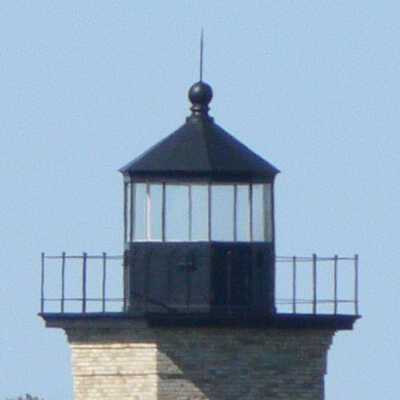
|
|
| Nikon TC-E15ED 1.5X | |
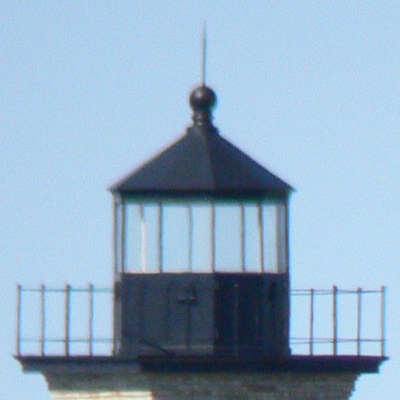
|
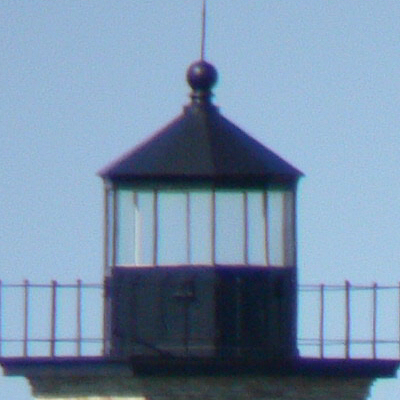
|
| Olympus C-180 1.7X | Olympus C-210 1.9X |
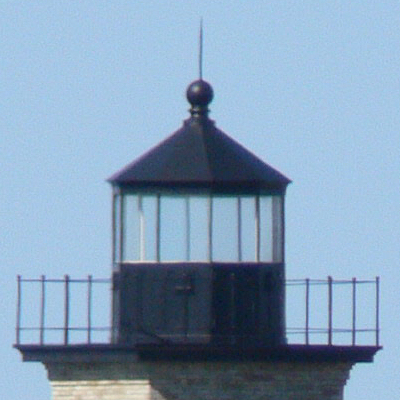
|
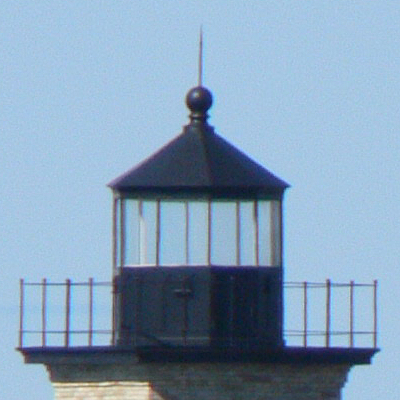
|
| Olympus B-300 1.7X | Olympus TCON-17 1.7X |
To ensure the above observations being correct, the chimney portion of each image is cropped and examined again. The following shows the results of the 1.5X group. It is obvious that the TC-E15ED has the best result (i.e., sharper with less chromatic aberration), and the TC-200M shows a bit more details than the A-200 does; but also shows purple fringes.
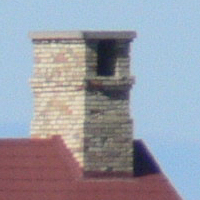
|
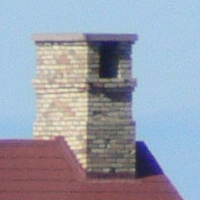
|
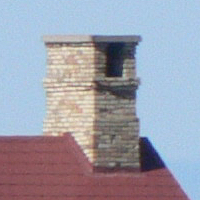
|
| Olympus A-200 1.5X | Ricoh TC-200M 1.5X | Nikon TC-E15ED 1.5X |
The following shows the results of the 1.7X group. The TCON-17 seems to resolve a bit more details than the B-300 does; but, it also has more purple fringes. Note that there is no clearly visible fringe in B-300's crop. Again, the contrast of the C-210 is higher than that of the C-180, and the image produced by the C-210 looks sharper. However, the C-210 still shows more purple fringes.
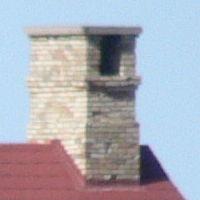
|
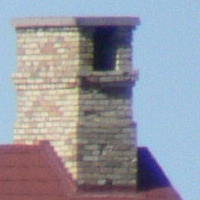
|
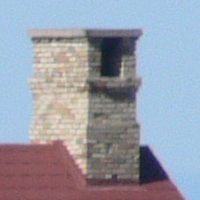
|
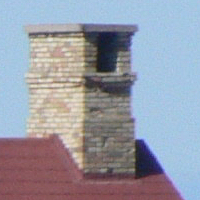
|
| Olympus C-180 1.7X | Olympus C-210 1.9X | Olympus B-300 1.7X | Olympus TCON-17 1.7X |
Next we look at the tree top area which can easily reveal chromatic aberration and resolution issues because of high contrast and small leaves. The following crops are in the center near the right edge. In the 1.5X group, the Nikon TC-E15ED still performs excellently without purple fringes and with very good resolution. This is closely followed by the Ricoh TC-200M; however, the Ricoh shows bad purple fringing. While the Olympus A-200 is not as sharp as the Ricoh TC-200M, it does not show much purple fringes.
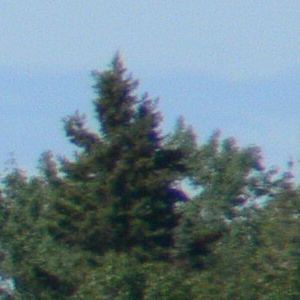
|
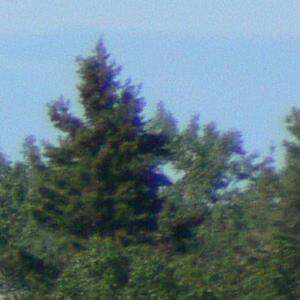
|
| Olympus A-200 1.5X | Ricoh TC-200M 1.5X |
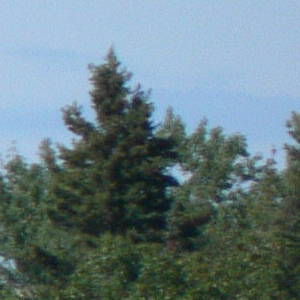
|
|
| Nikon TC-E15ED 1.5X | |
The following is the 1.7X group crops. I believe the TCON-17 and B-300 perform similarly in terms of chromatic aberration; however, the TCON-17 seems to have better resolution. Both are better than the C-180 and C-210. The comparison between the C-180 and C-210 is difficult because the cropped area of the C-210 is on the right edge. Due to its significant light fall-off, there is nearly no details in the crop of the C-210. Unfortunately, even in such a dark area with low contrast, the C-210 still has worse purple fringing than the C-180.
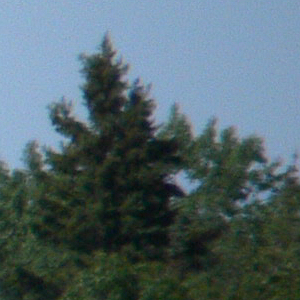
|
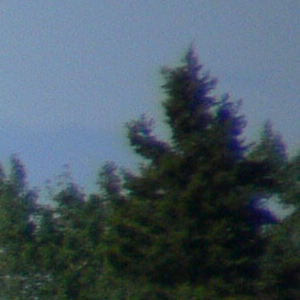
|
| Olympus C-180 1.7X | Olympus C-210 1.9X |
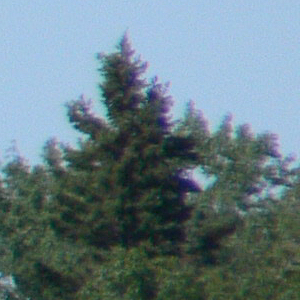
|
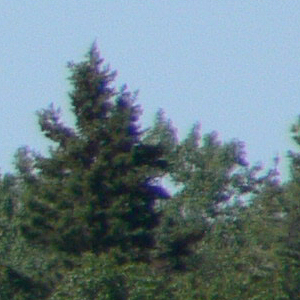
|
| Olympus B-300 1.7X | Olympus TCON-17 1.7X |
This part is about extreme corners. These crops come from the lower-left corner just below the water line. We hope to look at resolution of each lens at the extreme edge. The following is the 1.5X group crops. Again, the Nikon TC-E15ED is the only lens that provides good definition of the details on the lake shore. The Ricoh TC-200M seems to lose its edge to the Olympus A-200. The A-200 is not as good as the TC-E15ED; but, if one does not mind the edge portion, the A-200 still performs respectfully. The Ricoh TC-200M crop is soft with a large purple fringe along the shore line, and its contrast is the lowest of the three lenses.
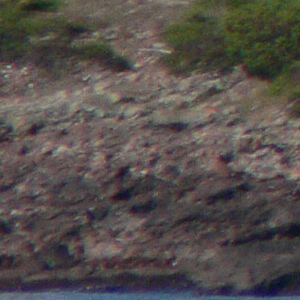
|
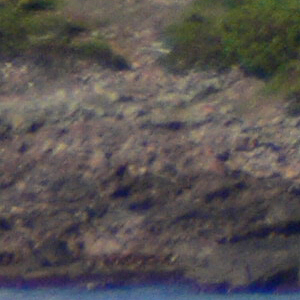
|
| Olympus A-200 1.5X | Ricoh TC-200M 1.5X |
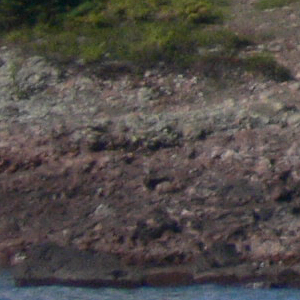
|
|
| Nikon TC-E15ED 1.5X | |
The following has the 1.7X group crops. Results from B-300 and TCON-17 still look very similar. Although these two lenses are very good in a large center area as demonstrated earlier, they do not have the same performance at corners as also reported in other comparison pages. Again, due to significant light fall-off, it is difficult to compare the C-180 and C-210; but, chromatic aberration of the C-210 along the shore line can still be seen.
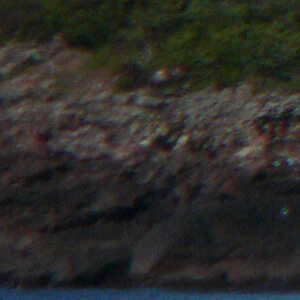
|
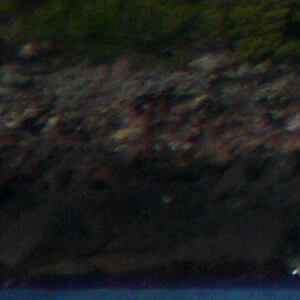
|
| Olympus C-180 1.7X | Olympus C-210 1.9X |
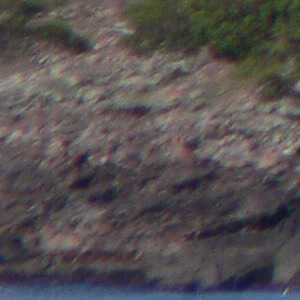
|
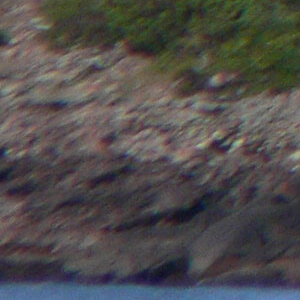
|
| Olympus B-300 1.7X | Olympus TCON-17 1.7X |
Here are a few findings from comparing the images of this scene: